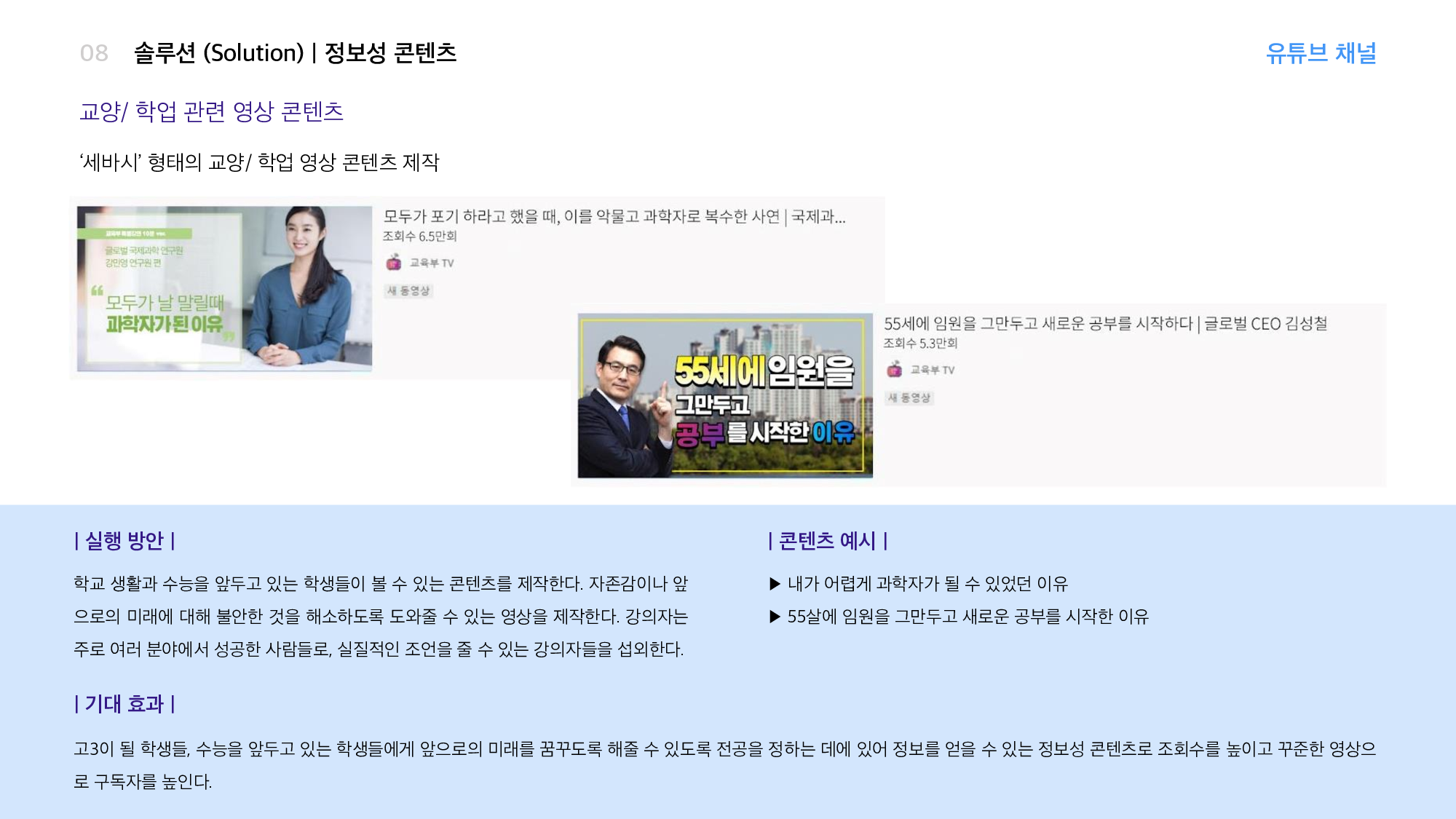
Digital PR Proposal for the Ministry of Education
<Production and Practice in Digital PR> in Seoul Women’s University, 2021
This project was undertaken as part of the <Production and Practice in Digital PR> course and proposes a Public Relations (PR) strategy aimed at transforming the image and enhancing the recognition of the Ministry of Education. The proposal includes situational analysis, problem identification, target analysis, conceptual messaging, and innovative solutions through digital content creation across various platforms such as YouTube and Instagram.
In the situational analysis section, the project meticulously analysed the content types and engagement levels of the digital channels currently operated by the Ministry of Education (YouTube, Instagram, blogs, Twitter, etc.). This revealed a discrepancy between the Ministry's potential influence and the actual level of engagement and connection with the target audience.
Following this, surveys and interviews were conducted to identify perception problems regarding the Ministry of Education. It was found that, despite its importance, the Ministry is perceived as outdated, uninteresting, and lacking in communication among the youth. Furthermore, a lack of appealing content that resonates with the younger demographic has resulted in low awareness and engagement.
The focus was then placed on understanding the needs and preferences of middle and high school students. The target analysis identified a demand for more engaging and interactive content that could bridge the gap between the Ministry's intentions and the students' interests.
Finally, in the solutions and conceptual messaging section, various digital content strategies were proposed to revitalise the Ministry's image and engagement levels. This included collaborations with popular YouTube channels, the development of interactive quizzes, Vlogs by Ministry staff, educational yet entertaining videos, and visually appealing content through Instagram.
This project allowed for the development of insights into digital PR strategies. A deep understanding of the target customer's preferences, habits, and perceptions is crucial for designing effective PR strategies. This project reinforced the importance of tailoring content and messages to the audience's interests and needs.
Additionally, engaging and relatable content is key to shifting public perception and engagement. Utilising trends, popular culture, humour, and relevance can significantly enhance the effectiveness of digital PR activities. Notably, collaborating with celebrities and channels to reflect current trends can leverage existing audiences for greater reach and impact, highlighting the value of influencer marketing in public sector PR strategies.
Moreover, in an era of rapid change, a successful PR campaign in the digital age requires a coordinated approach across multiple platforms. Tailoring content to the unique features and audiences of each platform, as suggested in the project, is crucial for maximising engagement. Furthermore, encouraging interaction and feedback through digital channels can foster a more engaged and loyal audience. This project offered practical ways to make government bodies more accessible and connected with their constituents.
In conclusion, this project provided valuable lessons on the importance of innovative digital PR strategies tailored to the target audience's preferences. It demonstrated that even public sector entities can significantly improve their image and public engagement by adopting creative, audience-focused approaches.
Project Outcome
You can see the learning outcome through this file. Unfortunately, only the Korean version is available.













